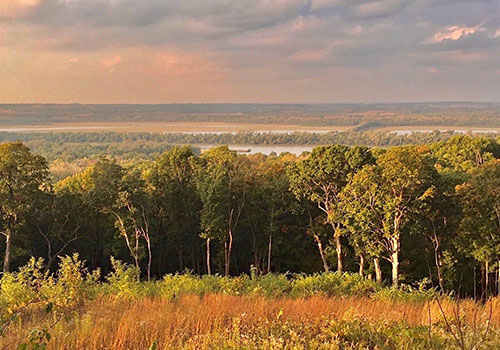Although the Midwest is known more for its flat prairies than hilly regions, there's still plenty of good hiking to be found there. What the region lacks in altitude, it makes up for in natural beauty, including sparkling lakes, hidden waterfalls, sandstone canyons, and more. Whether you're looking for a short day hike or a remote backpacking trail, we've put together the best options for strapping on your boots and seeing what the Midwest has to offer.
Ice Age Trail, Wisconsin
This 1,000 mile-long trail runs around along the border of an Ice Age era glacier that once covered much of Wisconsin. You can follow the trail through several of the state's most famous natural areas, including the gorges of Interstate State Park, the hills of Kettle Moraine State Forest, and the scenic river bluffs of the state's Driftless Area. There's no need to limit your hiking to the warmer months; the Ice Age trail is a favorite destination for snowshoeing and cross country skiing.
Starved Rock, Illinois
Located just 90 minutes from Chicago, this state park also owes its good looks to an ancient melted glacier. As the glacier receeded, it caused a torrential flood which carved the park's signature sandstone canyons. You can find flowing waterfalls in 14 of Starved Rock's 18 canyons. While the best time to see the waterfalls is in the spring and early summer, if you decide to brave the park in winter, you might be lucky enough to see a frozen ice fall.
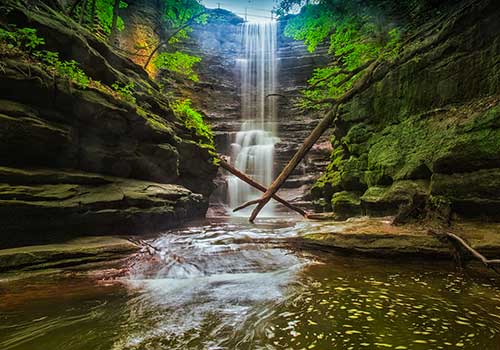
Ozark Trail, Missouri
Winding through the highlands of the Ozark Mountains, the Ozark Trail has some of the most varied hiking in the Midwest. From densely wooded forest to steep bluffs and picturesque streams and rivers, there is an opportunity for every kind of hiker. We recommended checking out the Taum Sauk section of the trail. This 35-mile stretch features Missouri's highest waterfall, naturally formed swimming pools, billion-year-old igneous rock formations, and scenic vistas of the Ozarks.
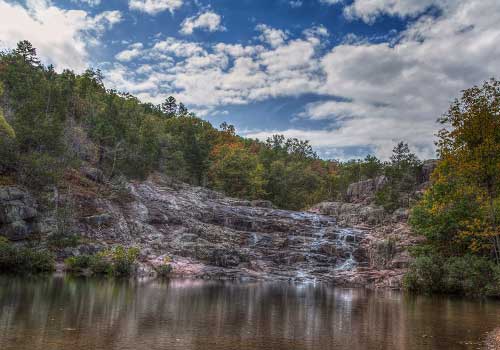
Cuyahoga Valley National Park, Ohio
Once a polluted dumping ground, during the past 40 years, the Cuyahoga Valley National Park has been restored back to its natural beauty. The 125 miles of trail runs through wetlands, rolling hills, creek crossings, and shale cliffs. Keep your eye out for wildlife: the park is home to beavers and river otters, as well as home to two blue heron santuaries.
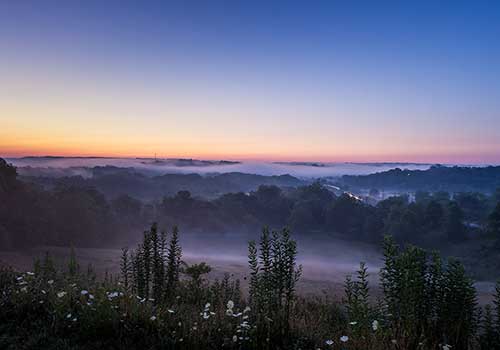
Isle Royale National Park, Michigan
This remote island located in the northwest corner of Lake Superior is also a National Park. Although it's only accessible by boat or sea plane, Isle Royale is actually one of the most re-visited National Parks in the U.S. Home to more than 100 miles of hiking trails, the landscape features rocky bluffs, evergreen forests, and beautiful views of Lake Superior. You might even spot a moose or two if you're lucky.
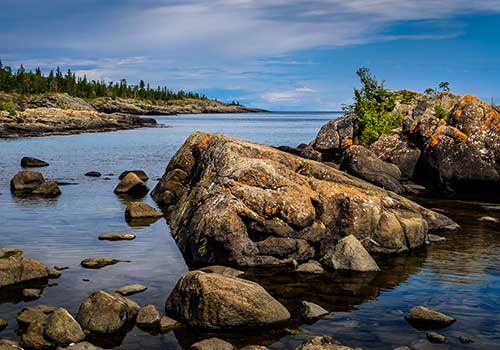
Pere Marquette State Park, Illinois
Named after the French Jesuit Missionary who traveled with Louis Joliet as he explored and mapped the upper Mississippi River in the late 1600s, Pere Marquette State Park sits nestled along the confluence of the Mississippi and Illinois rivers near Grafton, Illinois. The Park offers 12 hiking trails that accommodate everyone from beginners to experts through all sorts of terrain. A few of the trails follow along the rivers and up into the bluffs for amazing eagle-eye views of the park, while other trails trek deep into the dense forests for secluded hikes that lead to streams and swaths of open prairies. Pere Marquette State Park also offers camping amenities like a lodge, restaurant, cabins, and campgrounds. Horseback riding trails are available for those looking to hitch a scenic ride to the lookout points along the bluffs. Visit during the winter months to access limited hiking trails — depending on the amount of snow fall — and scout for eagles living in their natural winter habitat along the Mississippi River.
